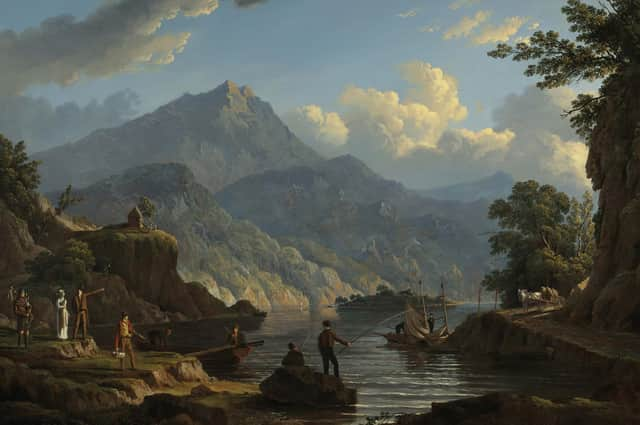Book review: Old Ways New Roads, edited by John Bonehill et al


Lockdown has denied us the opportunity of exploring Scotland much of which would otherwise be easily accessible by road, rail and sea. But 300 years ago, the restrictions on travel were very different, with much of the country connected by “old ways” – tracks largely suitable only for those on horseback or foot.
The introduction to this book quotes an Inverness-based rent collector, who described conditions in the 1720s as follows: “the old ways (for roads I shall not call them) consisted chiefly of stony moors, bogs, rugged, rapid fords, declivity of hills, entangling woods and giddy precipices.” However, this situation was to change radically within decades, as a series of military roads were built across the Highlands by General Wade and others to help counter the Jacobite threat.
Advertisement
Hide AdIt was into this landscape the first “tourists” soon ventured, taking inspiration from a series of travelogues, most famously Johnson and Boswell’s tour in 1773. And just as we currently have to divert our wanderlust to virtual journeys with photos and videos, so the would-be traveller in 18th century London was able to marvel at the magnificence of Scotland from afar, thanks to paintings and drawings by adventurous artists such as JMW Turner, which provide the focus of Old Ways New Roads. Indeed, by the 1780s, “the proliferation of lavishly illustrated published tours meant that Scottish sites might be enjoyed without leaving the armchair”. Sound familiar?
Old Ways New Roads is published in association with The Hunterian Art Gallery and Museum at the University of Glasgow to accompany a now virtual exhibition, which runs until May. Its series of scholarly essays essentially flesh out the exhibition’s pictures rather than devote much space to the evolution of the “new roads.”
Among the dozens of images in the book, I was particularly taken by William Daniell’s 1814 aquatint of Thomas Telford’s elegant iron-arched Bonar Bridge (alas destroyed in a storm) with mountains behind, and John Knox’s Landscape with Tourists at Loch Katrine (c. 1815), the sun picking out the thickly forested waterline.
The tourist boom of the early 19th century is well known to have been fuelled by works by Water Scott such as The Lady of the Lake, but among the many fascinating observations in the book is that the visitor influx was already causing problems as early as 1762, when a ticketing system was introduced by the Duke of Atholl at the Hermitage in Dunkeld, which successfully kept “lower class people from making repair to it.”
There are even unexpected comic moments in the book, such as a 1780 watercolour that perhaps paved the way for the saucy seaside postcard, showing fashionable women touring the Bass Rock distracted by and training a telescope on a group of young men jumping naked into the water from a nearby boat.
Old Ways New Roads, Travels in Scotland 1720-1832, edited by John Bonehill, Anne Dulau Beveridge and Nigel Leask, Birlinn, £20
A message from the Editor
Advertisement
Hide AdThank you for reading this article. We're more reliant on your support than ever as the shift in consumer habits brought about by coronavirus impacts our advertisers.
If you haven't already, please consider supporting our trusted, fact-checked journalism by taking out a digital subscription at https://www.scotsman.com/subscriptions